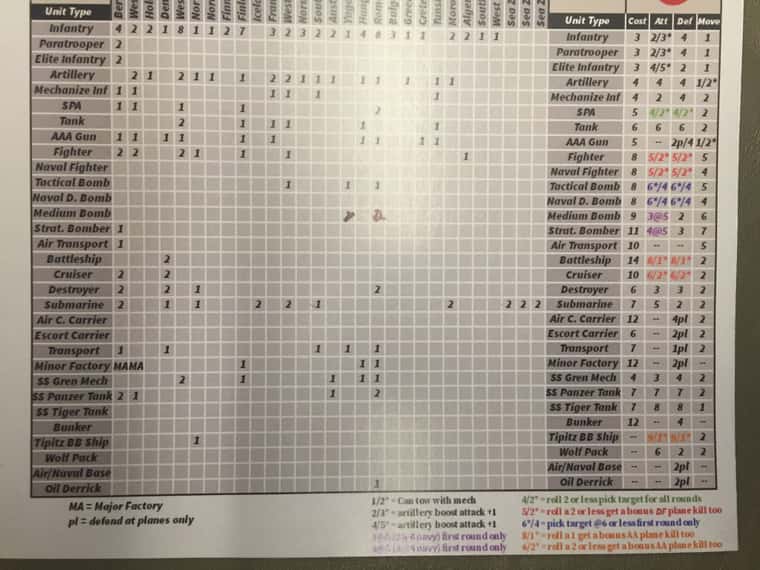@iffritstorm said in North Africa Problems:
Hey all! Looking for some thoughts, or other players’ experiences. Perhaps I am overlooking something.
I just two finished games of War Room, four players. We’re all relatively new to the game, and thought we’d try out the North Africa scenario. It sounded really fun. I played Axis as Germany and then as Italy (random nations).
This is my initial impression of the North Africa scenario:
IT IS WAY TOO EASY FOR THE AXIS TO WIN.
The victory condition for the Axis is just to simultaneously hold Egypt and the Middle East. My first game, we managed to take both territories on Turn 3. My second game, we did it on Turn 2. If the Axis throw all of their resources at Egypt and the Middle East (and I do mean everything), there is nothing the Allies can do to stop them. There just isn’t enough there in the Med at the start of the game for the Allies.
Obviously, throwing literally everything at the Middle East opens up France and North Africa as free targets. And if the game went even a turn or two longer, the Allies would mop the floor with the Axis with their vastly superior Atlantic air forces and comparatively gargantuan production capacity.
But it doesn’t matter. All the Axis have to do to technically win is hold those two relatively sparsely defended provinces.
Perhaps our experience was a fluke. But running the numbers on the fights, the only one that seemed even remotely even was the first engagement in M-3. Even if the UK sends everything it can into M-3, it still favors the Axis. All other engagements in B5 and B16 were vastly Axis-favored.
We thought about some potential ways to even out the scenario to make it harder for the Axis to win quite so quickly. Would be interested in some thoughts:
Have a production phase on turn 1, allowing the Allies to have a stack producing on India that would be able to reach B16 on turn 3 at least.
Give the UK an extra unit or two on B5. It might really make enough difference to make the combat last a little longer, allowing the US to start bringing in planes on turn 3.
Use the English Channel Sea Zone. It would force the German player to at least consider holding back some units on France, lest the UK player attempt a D-Day style landing.
Thanks for engaging.
This scenario is the most puzzle-ish, and is often determined in the first couple rounds.
Odds are B5 will hold if Britain sends in the 63rd. If it falls, the Allies are doomed. But if it holds, there are ways the Italian transports may be prevented from landing in B5 or B16 on Round 2 (depending on the combination/collision of Allied and Axis orders, what ships survive the first round, oil left, and pinning).
If the Italians get struck in M-3, or they instead have to land in T5 on Round 2, they may be delayed long enough that Britain’s first round of produced units get to B16 first:
Britain:
Round 1: Produce
Round 2: Deploy
Round 3: Move to B16 via rail if possible, or move to B17 or M-5 if no rail.
Round 4: Move to B16 or B5
Italy:
Round 1: Move to M-3
Round 2: Move to T5
Round 3: Move to B5
Round 4 move to B16
or
Italy:
Round 1: Move to M-3
Round 2: Stuck in T5
Round 3: (maybe) Move to B16
By that time, the US and Britain may be able to get more planes to B5/B16.
I haven’t logged into this forum in many moons… there’s a bit more activity about War Room on boardgamegeek, and a lot more activity about on its Discord server:









